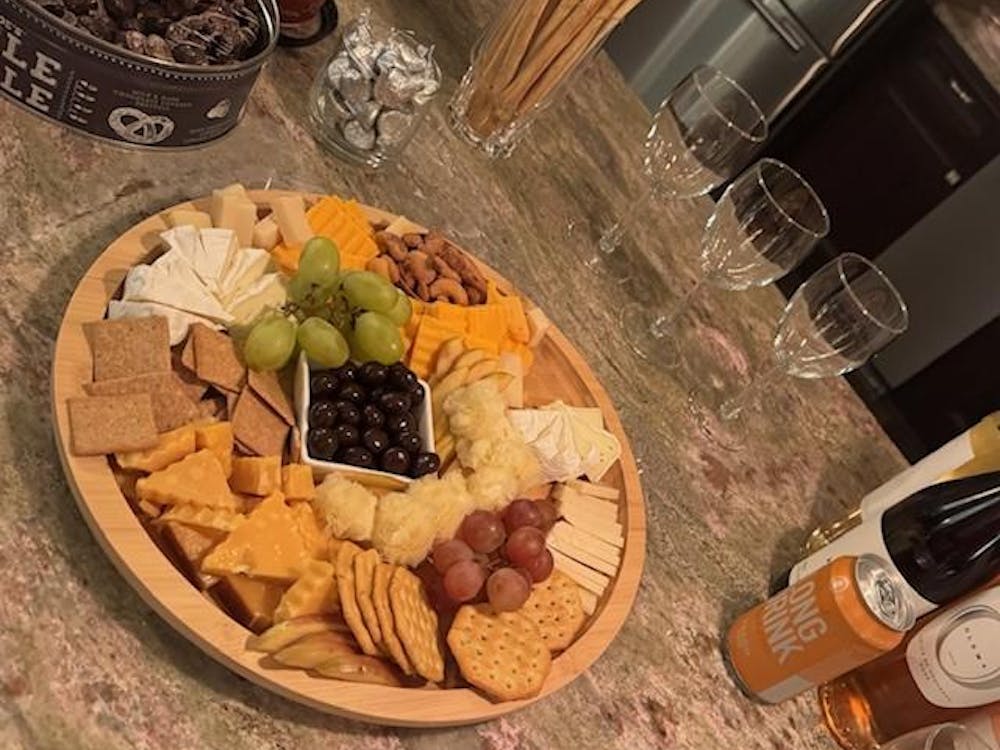Melvin Tolson, a poet who wrote during the turbulent Civil Rights Movement, challenged the traditional view of black art as a medium for social change by writing poetry that was not confined to a solitary theme. After years of neglect, his work now is being reintroduced to literary studies because of the efforts of a University professor.
Poor Boy Blue,
the Great White World
and the Black Bourgeosie
have shoved the Negro Artist into
the white and not-white dichotomy,
the Afroamerican dilemma in the Arts -
the dialectic of
to be or not to be
a Negro.
-- Melvin B. Tolson,
from "Harlem Gallery"
Tolson's work is about "being alive in a world of chance, in a world that seems to be controlled by forces you can't control," said English Prof. Raymond Nelson, editor of the newly published "Harlem Gallery and Other Poems by Melvin B. Tolson."
"It's a curse to have to choose things. You have to choose to be a Negro, choose to accept the restrictions, inhibitions -- or deny yourself," Nelson said.
To celebrate the publication of the annotated collection, Melvin B. Tolson, Jr., the poet's son, will open tonight's 8 o'clock program with a reading from his father's first book. "Dark Symphony," with its absorbing tempo and alluring allegro moments, will resound through the Old Cabell Hall Auditorium, resurrecting a piece by an almost-forgotten artist.
"We think that getting the notice for Tolson is the most exciting part of the event," said Mary Kathryn Hassett of the University Press of Virginia. "Even professionals who follow poetry don't know him. We're reintroducing this particular poet who deserves his place."
In addition to marking the publication of "Harlem Gallery and Other Poems by Melvin B. Tolson," tonight's reading also will honor the joint publication of "The Furious Flowering of African American Poetry," edited by Joanne V. Gabbin, a James Madison University English professor. Rita Dove, former U.S. Poet Laureate and University English professor, who wrote the introduction to "Harlem Gallery," will join the panel of guests, along with Pulitzer Prize winner Gwendolyn Brooks. Gabbin said Brooks' poem, "Second Sermon on the Warpland," inspired the summit on African-American poetry five years ago at James Madison University that the book is based on.
A rebirth for Tolson
"A glance at nearly any passage from the poems reprinted here will confirm that one is in the presence of a brilliantly eclectic mind determined not to hide its light under a bushel," Dove wrote in her introduction to "Harlem Gallery."
According to Nelson, Tolson's work remained historical, true to his elite conception of art, and yet ultimately was criticized because some thought it catered to the white community. Many people of the time thought the purpose of art should be political and help advance the status of blacks in society.
"Tolson wrote for posterity, adding to the great anthology humanity is putting together. He operated as an artist on the highest level he could," Nelson said.
The new Tolson collection brings together the author's three books -- "Rendezvous with America" (1944), "Libretto for the Republic of Liberia" (1953) and "Harlem Gallery" (1965) -- as well as additional poems not published elsewhere and written between his first and second books.
During his life, Tolson was compared to the likes of Langston Hughes and Countee Cullen, yet Tolson's work is no longer in print and almost has disappeared from literary study, a fact Nelson blames on its challenging form.
"He used the page as a canvas, creating all types of geometrical patterns," Nelson said. "He was very conscious of style. It is meant to engage the reader, make them become involved in reading poetry."
Yet, like other works of modernist poets such as T.S. Eliot and Ezra Pound, "Harlem Gallery" is notorious for being difficult, and Nelson saw the need for an annotated edition.
"The poem is highly developed; a lot of the allusions have to be identified," Hassett said. "But Ray's notes really are brilliant. It's the best explication this poem's ever had."
In the introduction to "Harlem Gallery," Dove writes that Tolson was born into a preacher's family in Missouri in 1898 and was educated at Fisk and Lincoln Universities. He entered Columbia University to further his education and finished all but the bibliography to a master's thesis on prominent figures of the Harlem Renaissance. He then taught at small black colleges in the Midwest and Southwest in order to make a living.
"Of course, we should, all of us, read 'Harlem Gallery' earnestly. We should read it for the often difficult things it has to say about the theory, history, and nourishments of art," Nelson said in an essay published in the "Virginia Quarterly Review," "We should certainly read it as a controversial treatise about race in the United States ... These are important issues of both the moment and the long haul. Not only did Tolson think them through, he lived them through."
The roots of the Furious Flowering
Gabbin, editor of "The Furious Flowering of African American Poetry," said she hopes to "give the people at the reading a sense of the spirit of the Furious Flowering conference" by presenting a passage from her introduction to the new book.
The Furious Flower Conference, held in 1994 at JMU, attracted the major influences in African-American poetry to assess the health of their art and understand its history, Gabbin said. The book features essays and interviews that sprung out of that monumental weekend in hopes of laying the groundwork on which African-American poetry can be discussed.
"What happened that weekend is hard to explain completely within the context of historicism and literary-criticism," she said. "For there was a poetic energy, a spirit, that was palpable in the defining moments that have become our collective memory."
She added that she devoted the first section of "Furious Flowering" to the discussion of the use of vernacular within black literature, emphasizing the impact of the oral tradition on African-American poetry.
"Poets look to the folk tradition for not only models, but touchstones for quality and beauty," Gabbin said.
Tolson, who she said was "a force at the conference," appears in the first section in an essay about his use of blues in his work.
Tonight's reading will include a performance by University faculty-composed band The Free Bridge Quintet, with vocals by Asst. Music Prof. Kyra Gaunt. It will highlight the inherent connection between African-American poetry and its base in blues and jazz. After the 20-minute set, the culmination of the evening will come when Brooks takes the stage.
In 1950, Brooks became the first black ever to receive the Pulitzer Prize, for her second book "Annie Allen." She became Poet Laureate of Illinois in 1968, a post she still holds today, and has received more than 75 honorary doctorates. Her autobiographies, "Report from Part One" and "Report from Part Two," both have received high acclaim.
"Gwendolyn Brooks was the inspiration for the 'Furious Flower' conference and the reason for the book," Gabbin said. "At 82 she is still making an impression. She is the mother of African-American poetry. It's going to be a real honor to be on the same podium as her"






